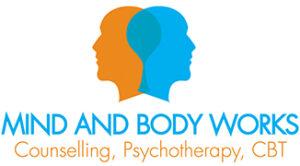The Problem
We don’t live in a vacuum. We are social creatures. We grew up in a group, we live in groups, we identify ourselves by the groups we belong to. Groups serve as a reflection of and affirmation of that chosen identity. Most importantly we learned how to be in a group, took our cues from the group and developed patterns of behaving, and from this our identity, in a group that we maintain to this day. These patterns, developed over our lifetime, become so ingrained and second nature they are largely unconscious.
The problem is that how we are in a group, based on these unconscious patterns, gets transferred to and acted out in all other groups we occupy. We bring the same patterns we learned in our first group, the family, into our work group, our social groups and our new family groups. The same dynamics get set up, acted out and a repetition of earlier experiences plays out – the past is played out in the present making the future a repetition of the past.
When these patterns are in conflict with how we want things to be and when they are destructive and unhelpful to the extent that they cut us off from the group, leading to isolation and loneliness, or give us a wholly unsatisfying experience of a collection of people then we can feel stuck.
The Session
In group therapy, we look for and look at these patterns ‘live’ in a group. We come to the group as we are, nothing more needs to be done. In the group therapy process, we bring the patterns to conscious awareness. This opens a window of choice where we can repeat the pattern or try something new. When we look at trying something new we tend to feel anxious. This is scary but it’s also telling us we are on the verge of a new dimension of life. When we risk doing something new we get different results. This changes us and our lives change. We receive new feedback from these new behaviours that informs our awareness. This starts a chain-reaction process of change. But it starts and happens from the inside out, not from the outside in; or from ourselves not the external environment.
Group therapy as a Process
The key to group therapy is that we can’t achieve this process alone. For each individual to progress and change the group as a whole must negotiate two vital issues: trust and conflict. In looking to establish trust we explore our anxieties and fears. We also learn to be empathic and respectful of other group members to encourage that process in each other. By extension of this, we explore conflict. Group members experiment with expressing difference. As the group feels safe to do so it further cements trust and leads to a deepening in the relationship of the group.
In negotiating trust and conflict, the group develops a cohesiveness from their shared experience. This creates the environment for change to be allowed to happen. Deeper exploration and insight into ourselves occur. This is assisted by the understanding of the commonality of our experience that is seen in the group, that our problems are the same. The group establishes an intimacy, the learning of which can be transferred into the other groups in our lives – whether family, work or friends.
This article was written by Thomas Larkin, psychotherapist at Mind and Body Works. To read more about Thomas click here
